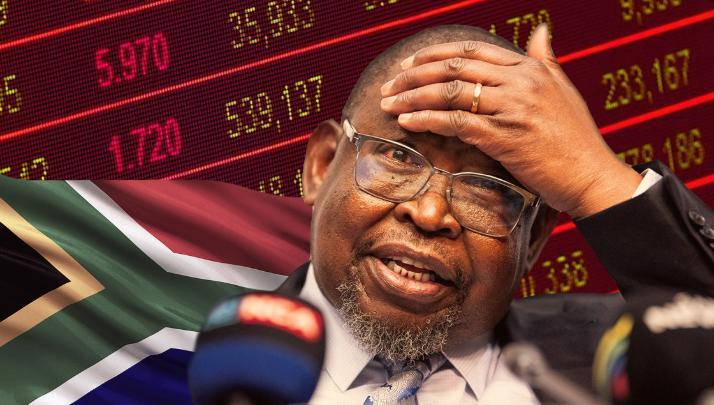Africa-Press – South-Africa. A one percentage point increase in short- and long-term interest rates raises South Africa’s debt burden by R12.3 billion and its debt-servicing costs by R7.8 billion.
This illustrates how sensitive South Africa’s finances are to fluctuations in the government’s interest rates, largely due to the sheer size of the state’s debt burden.
South African government debt is sitting at over R5.5 trillion, with it set to peak at over 77% of GDP before gradually being reduced.
This is despite efforts in recent years to narrow the budget deficit and reduce borrowing requirements through fiscal consolidation.
The National Treasury’s full Medium-Term Budget Policy Statement (MTBPS) outlined the risks South Africa faces due to its substantial debt load.
It warned that despite all its efforts to keep a tight lid on government spending and raise revenue, South Africa’s debt obligations are expected to remain elevated over the next decade.
The process of fiscal consolidation is slow and painful, with it relying heavily on squeezing additional tax revenue out of a stagnant economy.
It is also dependent on the state limiting its spending growth to at or below headline inflation to create a primary budget surplus.
A primary budget surplus is created when the government spends less money than it brings in through tax revenue, excluding debt-servicing costs.
This results in a smaller borrowing requirement, stabilising the debt load and eventually enabling the state to pay down its liabilities.
One of the major risks to this process is a spike in the interest rates the government pays on its debt, alongside a weakening currency or inflation.
These shocks, even from a small change, can result in billions of rands in additional debt and interest payments, affecting the overall budget and possibly plunging the country into a debt trap.
“This sustained debt burden increases exposure to movements in interest rates, inflation, and the exchange rate, with direct implications for the debt trajectory and debt-servicing costs,” the Treasury said.
“A 1 percentage point increase in short- and long-term interest rates is estimated to raise gross loan debt by R12.3 billion and annual debt-servicing costs by R7.8 billion.”
These impacts can be seen in the graphs below, courtesy of the National Treasury.
Turning the corner
South Africa appears to have turned the corner, with the National Treasury forecasting a widening primary surplus over the next three years.
This should see the country’s debt trajectory flatten, stabilise, and eventually decline as more revenue is freed up to pay down the state’s debt.
Symmetry’s Izak Odendaal explained that fiscal consolidation is a painful process of constraining government spending and raising tax revenues, with taxpayers essentially paying more and getting less in return.
This has been necessary since South Africa followed the alternative approach of funding spending with debt for too long. The government now spends a fifth of tax revenues on interest payments, diverting funds away from other important social objectives.
The primary budget surplus, coupled with an additional R31 billion top-up from the Reserve Bank’s gold and foreign exchange contingency reserve account, will stabilise debt levels as a share of GDP.
The debt-to-GDP ratio is projected to peak at 77.9% in the current fiscal year and gradually decline thereafter.
It is not the first time that the Treasury has promised to “flatten the curve” in the debt ratio, but previously, this goal was always a few years away.
Odendaal said this is happening as we speak, even though it will do so at a slightly higher level than the May Budget expected. This is significant and means the interest burden will also start stabilising as a share of revenue.
The decline in the debt ratio would have been faster, but slower growth in nominal GDP means the denominator will be smaller, pushing the ratio slightly higher.
However, the only sustainable cure for South Africa’s ailing financial health is significantly faster economic growth, which is more easily achievable off a solid fiscal footing.
In the MTBPS, South Africa’s real (excluding inflation) and nominal (including inflation) economic growth rates were revised lower, given global headwinds and the failure of fixed investment spending to grow as expected.
Real GDP growth of only 1.2% is expected in 2025, though this still represents double the rate achieved in 2024. It is projected to rise to 2% in 2028.
These forecasts are broadly in line with the consensus of private sector economists. In other words, while 2025 is disappointing relative to earlier expectations, it already marks an improvement from previous years, and it should continue rising over the medium term.
For More News And Analysis About South-Africa Follow Africa-Press






